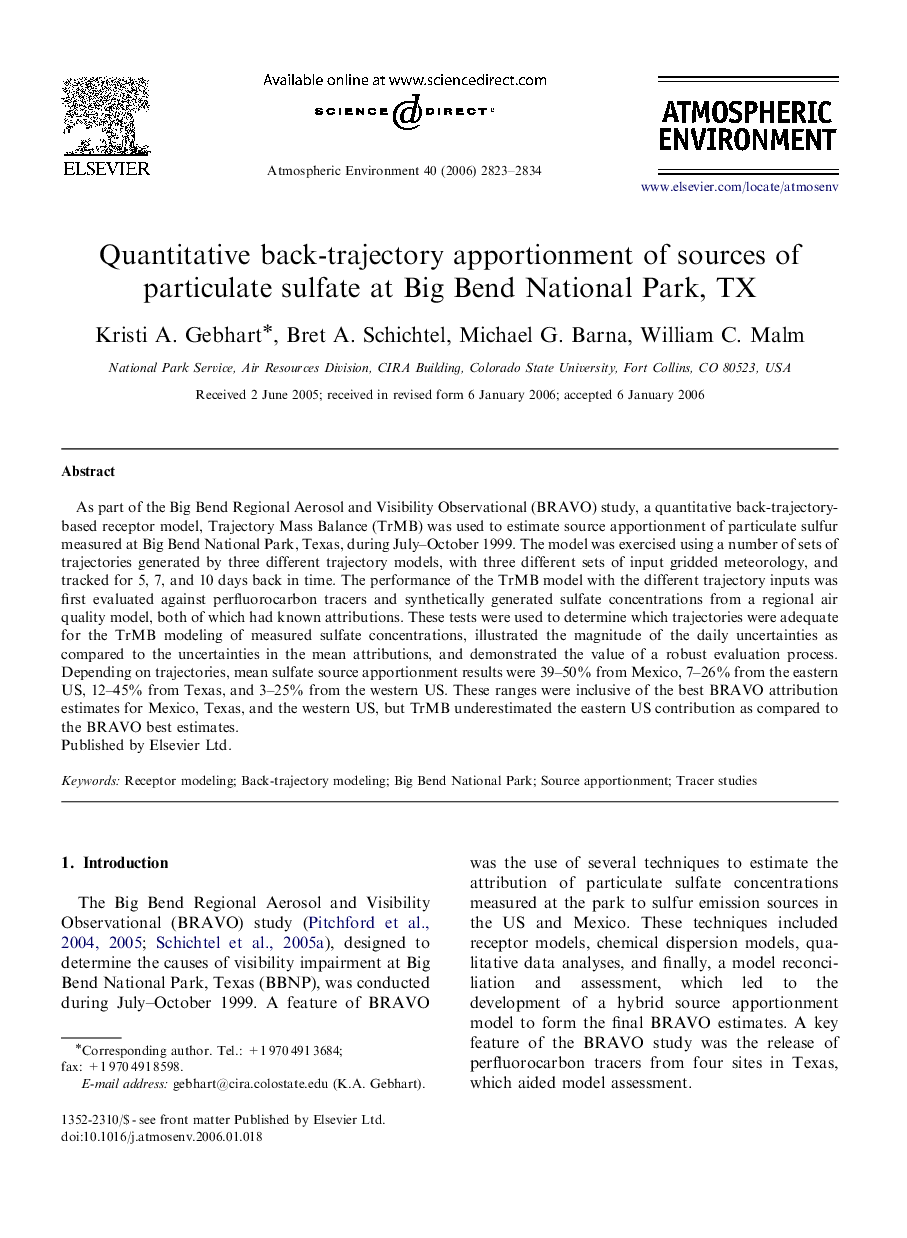| Article ID | Journal | Published Year | Pages | File Type |
|---|---|---|---|---|
| 4444895 | Atmospheric Environment | 2006 | 12 Pages |
As part of the Big Bend Regional Aerosol and Visibility Observational (BRAVO) study, a quantitative back-trajectory-based receptor model, Trajectory Mass Balance (TrMB) was used to estimate source apportionment of particulate sulfur measured at Big Bend National Park, Texas, during July–October 1999. The model was exercised using a number of sets of trajectories generated by three different trajectory models, with three different sets of input gridded meteorology, and tracked for 5, 7, and 10 days back in time. The performance of the TrMB model with the different trajectory inputs was first evaluated against perfluorocarbon tracers and synthetically generated sulfate concentrations from a regional air quality model, both of which had known attributions. These tests were used to determine which trajectories were adequate for the TrMB modeling of measured sulfate concentrations, illustrated the magnitude of the daily uncertainties as compared to the uncertainties in the mean attributions, and demonstrated the value of a robust evaluation process. Depending on trajectories, mean sulfate source apportionment results were 39–50% from Mexico, 7–26% from the eastern US, 12–45% from Texas, and 3–25% from the western US. These ranges were inclusive of the best BRAVO attribution estimates for Mexico, Texas, and the western US, but TrMB underestimated the eastern US contribution as compared to the BRAVO best estimates.
